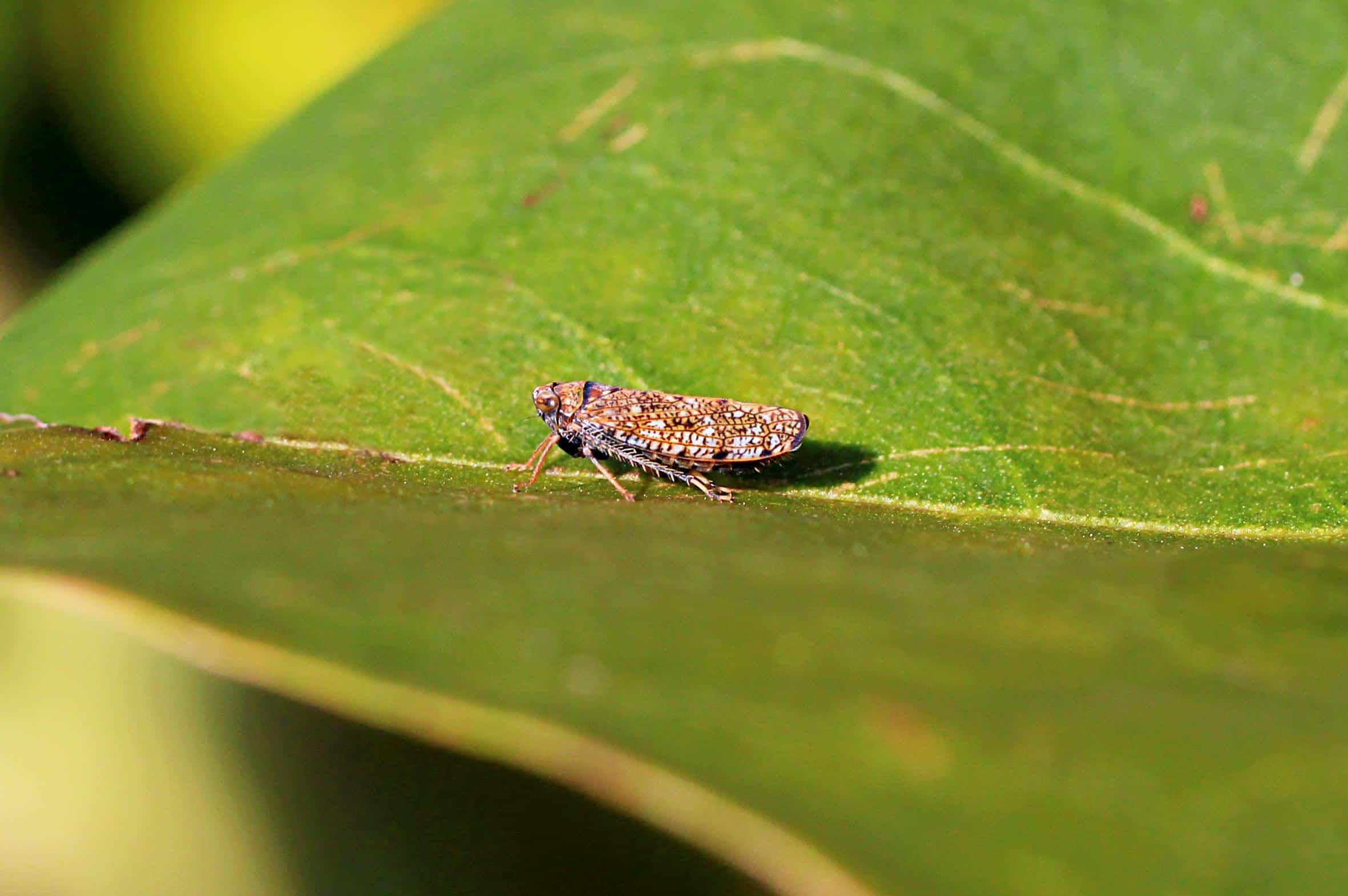Penny Frith

Orientus ishidae
Last year I undertook a photographic invertebrate study of a seemingly insignificant park in London. I was interested in what I would find in a small urban park. I chose Warwick Gardens in Peckham as it was close to my home, making it easy to pop there for a couple of hours each day.
My mission was to photograph everything that moved.
The habitat turned out to be great. The park is flanked by a railway line and gardens, where hawthorn, chestnut, hazel and hornbeam trees grow. The council has allowed the borders to go wild with barley grass, thistles, nettles, green alkanet, comfrey and black horehound. Plants like ivy, rose and bramble overflow from the gardens alongside sycamore, hazel and lilac. And much of the grass is punctuated with yarrow and ragwort.
From March until December I spent every possible day crouched in the bushes with my camera uncovering a plethora of insect life. I found blue wasps, barkflies, bugs, more bees and wasps than I can name, and a leafhopper that turned out to be the first recorded sighting in the UK. A lilac bush where a lot of insects were sunning themselves was where Orientus ishidae chose to hang out.
To help with species identification, I uploaded all my photos onto Flickr where I found a whole community of entomologists more than willing to share their knowledge. One day in September, I had a notification from Tristan Bantock, the national recorder for shieldbugs, about a leafhopper I had photographed. Tristan told me this was the first recorded UK sighting of Orientus ishidae.
My first reaction was “blimey”. I really wasn’t expecting to find a new species. Tristan arranged to visit the park where we found another Orientus ishidae which he took away to formally identify. The find caused a stir in the leafhopper community and the next two weeks saw a flurry of entomologists visiting the park with sweepnets – much to the amusement of regular park users.
Orientus ishidae is a beautiful looking leafhopper with an orange mosaic pattern on the wings. It prefers hazel to other plant species. The railway line that runs along the side of the park is one possible explanation for how it landed in Peckham, having been swept in by the passing trains. I found a couple more in the following weeks sitting on the lilac.
I am immensely proud that my small survey could throw up something so significant, and happy that all the hours I spent in the bushes with a camera put Peckham on the entomological map. For a while I became a local celebrity after an account of my find appeared in the local press, and the local bookseller told all her customers about it. It was a delightful story to tell all the park users who had spent months asking me “What are you doing?”. Some of them are now equipped with a photo of the leafhopper as I have recruited them to look out for it.
For me, the most interesting outcome from this survey has been the variety of insects I found. According to Tristan, there are some ‘significant’ species living in Warwick Gardens, including Rhaphigaster nebulosa, Synophrophsis lauri, Rhyparochromus vulgaris, Arocatus longiceps and southern green shield bugs. I hope this project goes some way to highlight the importance of our urban habitats.
I am planning a talk with a slideshow in March where the local residents can come and learn about the bug life in their local park. I would like them to feel proud of what is on their doorstep. And I would like to encourage everyone to stop for a couple of minutes and peep into the bushes – you never know what you might find.
